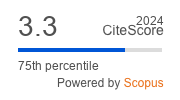Article | Open Access
The Role of Spatial Context in Shaping Adolescents’ Peer Relationships
| Views: | 3000 | | | Downloads: | 2088 |
Abstract: This article explores the role of neighbourhoods as a spatial context for peer relationships among adolescents. We examine the correlations between neighbourhood composition and places suitable for young people for friendship intimacy and peer belonging. We hypothesise that favourable demographic and social neighbourhood compositions, knowledge, and use of places suitable for young people, as well as the spatial appropriation of such places, promote peer relationships. The present study carries out empirical testing of the spatial hypotheses with survey data from adolescents (N = 3225) in two German cities with 30 neighbourhoods. Our results show that neighbourhood composition is not related to peer relationships. Nevertheless, knowledge of safe places suitable for adolescents, as well as the appropriation of unsupervised (hang out) places, correlate with peer relationships. Interestingly, there are divergent results for 7th and 9th graders that can be explained by the developmental stages of the adolescents.
Keywords: adolescence; belonging; friendship; neighbourhood; peer relationship; spatial appropriation; spatial context
Supplementary Files:
Published:
Issue:
Vol 10, No 3 (2022): On the Role of Space, Place, and Social Networks in Social Participation
© Mats Beckmann, Katharina Knüttel, Sören Petermann, Till Stefes. This is an open access article distributed under the terms of the Creative Commons Attribution 4.0 license (http://creativecommons.org/licenses/by/4.0), which permits any use, distribution, and reproduction of the work without further permission provided the original author(s) and source are credited.


